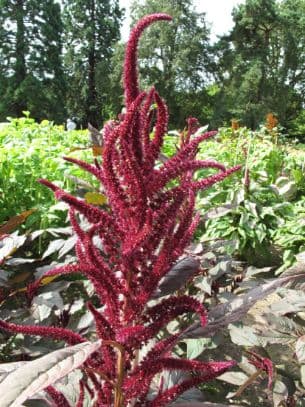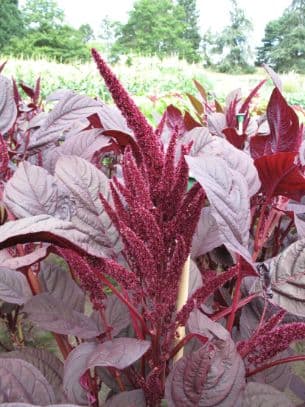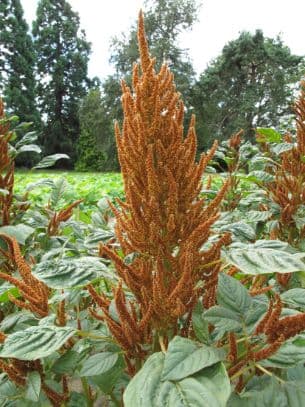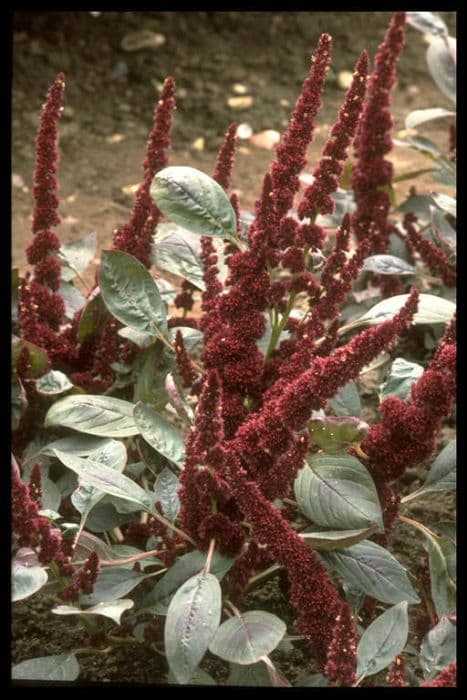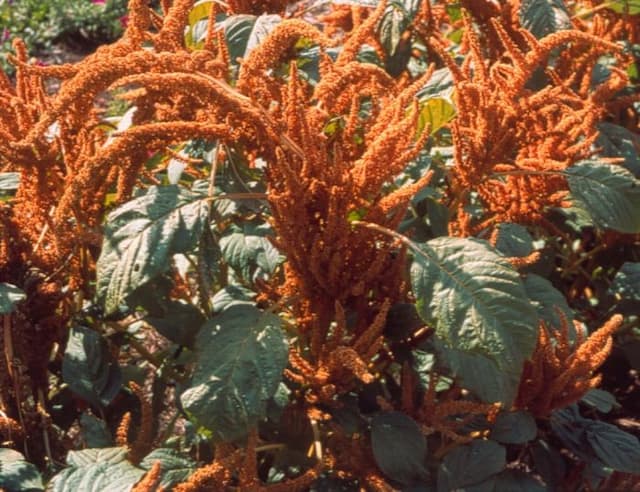Cockscomb Celosia argentea var. cristata (Plumosa Group) 'Fresh Look Orange' (Fresh Look Series)

ABOUT
The Celosia 'Fresh Look Orange' from the Fresh Look Series is known for its striking appearance, characterized by vibrant orange feathery plumes that create a bold visual impact. These plumes, resembling soft, velvety flame-like flowers, are tightly clustered and stand atop green stems with a bushy, upright habit. The foliage of this plant is equally attractive, with leaves of a fresh, green hue that create a lush backdrop for the vivid orange plumes. These flowers are not only colorful but also have a textural feel that adds depth and interest to the plant's overall appearance. The showy plumes maintain their color for an extended period, ensuring that the plant has lasting appeal throughout its growing season. The 'Fresh Look Orange' variety presents a lively and festive addition to any garden or container, delivering a continuous display of warm, cheerful color.
About this plant
 Names
NamesSynonyms
Cockscomb, Wool Flower, Brain Celosia, Plume Plant.
Common names
Celosia argentea var. cristata.
 Toxicity
ToxicityTo humans
The plant commonly known as cockscomb is not known to be toxic to humans. There are no widely recognized symptoms of poisoning because it is generally considered safe. While eating ornamental plants is not advisable, ingesting parts of the cockscomb plant typically does not lead to serious consequences.
To pets
Cockscomb is not known to be toxic to pets either. There are no specific symptoms associated with poisoning from cockscomb, as it is not commonly reported to cause adverse effects in animals if they ingest parts of the plant. As with any non-food plant, pets eating cockscomb may experience mild gastrointestinal upset due to the novelty rather than toxicity.
 Characteristics
CharacteristicsLife cycle
Annuals
Foliage type
Deciduous
Color of leaves
Green
Flower color
Orange
Height
1-2 feet (30-60 cm)
Spread
1 foot (30 cm)
Plant type
Herb
Hardiness zones
10
Native area
Africa
Benefits
 General Benefits
General Benefits- Easy to grow - Celosia 'Fresh Look Orange' is known for being easy to cultivate, requiring minimal maintenance which makes it perfect for novice gardeners.
- Vibrant color - It provides a burst of bright orange color to gardens, which can create striking visual appeal in flower beds and borders.
- Long blooming period - This celosia variety has a lengthy blooming season, offering colorful displays from summer to fall.
- Drought tolerance - Once established, it can tolerate periods of dry conditions, making it suitable for hot and arid climates.
- Resistant to pests and diseases - It's relatively resistant to common garden pests and diseases, reducing the need for chemical treatments.
- Attractive to pollinators - The blooms attract bees and butterflies, which can help pollinate other plants in the garden.
- Versatile uses - It's suitable for use in mixed containers, garden beds, and as a cut flower, adding versatility to its applications in landscaping and floral design.
- Low fertilizer requirements - This plant does not require heavy feeding, making it easier and more cost-effective to maintain.
 Medical Properties
Medical PropertiesThis plant is not used for medical purposes.
 Air-purifying Qualities
Air-purifying QualitiesThis plant is not specifically known for air purifying qualities.
 Other Uses
Other Uses- Art and Craft Projects: The vibrant plumes of Celosia can be used to create natural dyes for textiles, providing a sustainable and organic option for fabric coloring.
- Edible Landscaping: Celosia adds a pop of color to an edible landscape, where it can grow alongside vegetables and herbs, enhancing the overall aesthetic of the garden space.
- Fish Tanks: After proper treatment to remove any toxins, dried Celosia plumes can be used as decorative elements in aquariums, adding a touch of natural beauty.
- Nature-Inspired Decor: Whole dried Celosia plants, with their intricate and bright flowers, can be used to create striking, long-lasting indoor decorations.
- Photography Prop: Professional and amateur photographers alike can use the striking appearance of Celosia to add interest and flair to their portrait and still life photography setups.
- Educational Tool: Celosia plants can be used in school projects to discuss plant biology, pollination, and the importance of flowering plants in ecosystems.
- Culinary Garnish: Although not a common use, the flowers of Celosia can be used as an ornamental garnish for culinary dishes, adding color and texture.
- Wedding Bouquets: The unique and visually appealing structure of Celosia makes it an excellent candidate for inclusion in non-traditional wedding bouquets and floral arrangements.
- Pressed Flower Art: Celosia flowers can be pressed and preserved, then used in crafting beautiful pressed flower art pieces such as bookmarks, cards, or framed artwork.
- Mindfulness Practices: The intricate details and vivid colors of Celosia can be used as a focus point during mindfulness and meditation practices to help center thoughts and reduce stress.
Interesting Facts
 Feng Shui
Feng ShuiCock's comb is not used in Feng Shui practice.
 Zodiac Sign Compitability
Zodiac Sign CompitabilityCock's comb is not used in astrology practice.
 Plant Symbolism
Plant Symbolism- Affection: The vibrant orange color of Celosia 'Fresh Look Orange' often symbolizes warmth, affection, and human connection, as orange combines the energy of red and the happiness of yellow.
- Creativity: Its unique, feathered plumes and rich color may represent innovation and creativity, encouraging one to think outside the box.
- Boldness: The eye-catching appearance of the 'Fresh Look Orange' plant stands out in any garden, signifying a boldness and courage to be uniquely oneself.
- Endurance: Celosia plants, in general, are known for their hardiness and longevity, often lasting through the summer heat, which can symbolize endurance and resilience in life.
 Water
WaterFor the 'Fresh Look Orange' Celosia, or more commonly known as Cockscomb, watering should be done to keep the soil consistently moist but not waterlogged. In general, watering should occur when the top inch of soil feels dry to the touch, typically about once or twice a week depending on the weather and soil drainage. Each watering session should involve enough water to saturate the soil without leaving standing water, which can be roughly equivalent to 1 gallon of water for an outdoor garden plant or 8-16 ounces for smaller container plants, adjusted every 7 days based on rainfall and temperature conditions.
 Light
LightCockscombs prefer a spot that receives full sun for vibrant growth and the best flower production. Ideally, they should be placed in a location where they can get at least 6 to 8 hours of direct sunlight daily. They can tolerate some light afternoon shade, especially in extremely hot climates, but too much shade can reduce blooming and weaken the plant.
 Temperature
TemperatureCockscombs thrive in warmer temperatures and are considered a tender annual. The ideal temperature range for vigorous growth is between 60°F and 80°F. They can endure slightly cooler nights, but temperatures below 50°F can harm the plant. It is important to avoid exposing them to temperatures above 90°F for prolonged periods, as extreme heat may stress the plant.
 Pruning
PruningPruning Cockscombs is generally done to remove spent blooms and encourage further flowering. Deadheading, or cutting off the old flower heads, should be done throughout the blooming season to maintain plant appearance and vigor. The best time to prune is when the flower heads start to fade and wither. Regular pruning can also help prevent potential fungal diseases by improving air circulation within the plant.
 Cleaning
CleaningAs needed
 Soil
SoilThe best soil mix for Cockscomb (Celosia) is well-draining, fertile, and loamy soil with a pH of 6.0 to 6.5. Amend the soil with organic compost or a balanced slow-release fertilizer to enhance nutrients and structure. Ensure good aeration by adding perlite or sand to prevent soil compaction.
 Repotting
RepottingCockscomb should be repotted annually, especially when it outgrows its current container. This allows for inspection of the root system, soil replenishment, and overall plant health maintenance. Repot in the spring or early summer at the beginning of the growing season.
 Humidity & Misting
Humidity & MistingCockscomb thrives in moderate to high humidity levels, ideally between 40% to 70%. Avoid placing the plant in excessively dry environments as it can impede growth and vitality. Maintaining proper humidity supports the plant's lush foliage and vivid flowers.
 Suitable locations
Suitable locationsIndoor
Keep in indirect light, warm temperature, and high humidity.
Outdoor
Plant in full sun, well-draining soil, after last frost.
Hardiness zone
10-11 USDA
 Life cycle
Life cycleThe life cycle of Celosia argentea var. cristata (Plumosa Group) 'Fresh Look Orange', commonly known as cockscomb, begins with seed germination, which occurs in warm soil temperatures typically after the danger of frost has passed. The seedlings emerge within 1-2 weeks and develop into young plants with distinctive foliage. As the cockscomb grows, it enters the vegetative stage where it produces a bushy array of leaves before initiating flowering, which is characterized by vibrant, feathery plumes that are the hallmark of the 'Fresh Look Orange' series. These plumes may last several weeks to months, during which time the plant can be pollinated. Following pollination, the plant produces seeds that mature, eventually dispersing to start a new plant generation. The plant may complete its lifecycle within a single growing season, as it is typically grown as an annual.
 Propogation
PropogationPropogation time
Spring to Summer
The most popular method of propagation for Celosia argentea var. cristata, commonly known as cockscomb, is by seed. To propagate this plant, begin by sowing the seeds indoors about 4 to 6 weeks before the last anticipated frost date in your region. Spread the tiny seeds over a moist seed-starting mix in a tray or pot and press them gently into the surface, but do not cover them with soil as they need light to germinate. Keep the soil temperature around 70 to 75 degrees Fahrenheit (21 to 24 degrees Celsius), and maintain consistent moisture. Germination typically occurs within 10 to 14 days. Once the seedlings develop their first true leaves, they can be transplanted into individual pots before eventually moving them outdoors after the risk of frost has passed.
